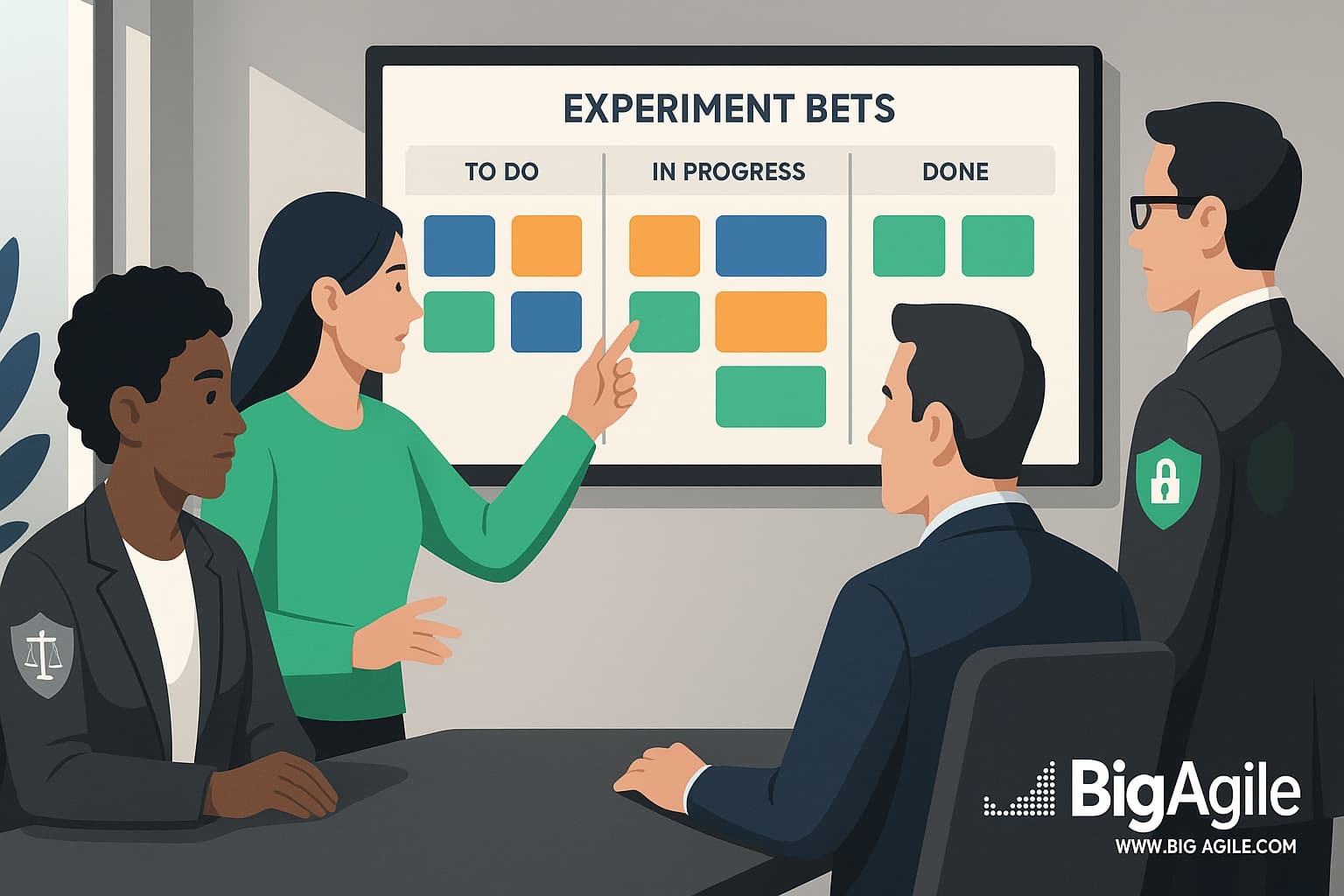
A SaaS checkout team and their payments partner invited two long-time customers to be design partners for a new Pay-in-4 API.
Week one, they shipped a guarded pilot to a shared sandbox; the first test failed within minutes. Idempotency keys did not match across systems; rate limits were too tight during promo spikes; the kill switch rolled them back really nice, so yes we celebrate that. Nobody looked for blame; leaders thanked the teams for surfacing real risks early; the Slack channel lit up with joint fixes. Agiletopia at the team level :)
Two weeks later, the second pilot ran in a small release ring; the conversion rate for the test cohort lifted 30 percent with clearer declines and faster retries. The outcome was not luck; it was a simple, safe-to-fail loop that both companies trusted. Developers might refer to these are "contracts".
What?
Design-partner programs turn key customers and suppliers into co-learners, not spectators. We should agree on a problem worth solving; run small joint experiments in a shared sandbox; move to limited production via release bands; observe together; and keep a rollback plan one click away (or in this case, fairly automated).
Co-innovation loop: hypothesis → sandbox spike → ring zero internal test → ring one design partners → ring two early cohort → full rollout; each step has a success metric and a kill switch.
Shared sandbox: synthetic or minimized data; shared observability; feature flags; test accounts; traffic simulators; joint runbook for rollback and recovery.
Release rings: ring zero internal dogfood; ring one design partners with explicit consent; ring two small market slice; scale only when signals are good.
Guardrails that protect learning:
IP & privacy: NDA, data processing addendum, data minimization rules, data residency notes, approved tools.
Change safety: feature toggles, idempotency rules, rate-limit policies, automated schema contracts.
Decision rights: who flips flags, who approves ring expansion, who declares rollback, what thresholds apply.
People practices: psychological safety so teams speak up early; reference Edmondson’s The Fearless Organization. Adoption readiness across stakeholders; reference Hiatt’s ADKAR to align Awareness, Desire, Knowledge, Ability, Reinforcement across companies.
So What?
Co-learning shortens time-to-value and surfaces integration or policy gaps while the blast radius is small. We can cut rework, limit reputational risk, and improve product-market fit with real usage, not "slideware".
Clear guardrails let legal, security, and engineering say “yes” to small tests; psychological safety keeps issues visible; change leadership and the coalitions keep people ready to adopt the change instead of resisting it. The relationship shifts from contract policing to shared outcomes.
Now What?
Run a 30-day co-innovation pilot with two design partners.
Week 0–1; choose and charter
Recruit two partners with real traffic and high trust; write a one-page charter; problem to solve, success metric, rings plan, rollback plan.
Stand up a shared sandbox: synthetic data, common logs, alert thresholds, and a joint on-call Slack channel (or similar).
Define one success metric and one safety metric; e.g., +10 percent checkout completion; ≤ 0.1 percent payment error rate.
Capture change readiness per org; who needs awareness, training, or reinforcement (example from ADKAR).
Week 2; sandbox spike and ring 0
Run a spike behind flags; verify contracts, idempotency, and rate limits; execute the rollback runbook in practice.
Decide on ring 1 go; only if safety metric is inside limits.
Week 3; ring 1 with design partners
Flip flags for a small percentage; hold a 15-minute daily scrum (or scrum of scrums) with partners; review conversion, latency, error PBCs; log every event.
Week 4; retro and decide
Joint retrospective; what worked; what surprised; what to change.
Update the Operating Level Agreement with new data contracts or decision thresholds.
Either scale to ring 2 or park the idea; publish a one-pager “what changed and why”.
Design-partner charter essentials
Purpose and scope; shared metric and safety guardrail; data rules and tool list; decision rights for flag flips and rollbacks; cadence for huddles and retro; who gets the learnings and how they are shared back.
Let's Do This!
Ecosystems that learn together; win together; they also fail safer.
A small, well-guarded design-partner loop turns uncertainty into capability without betting the quarter. Start with two partners, one metric, one month; ship in rings; keep the kill switch handy; meet daily for 15 minutes; and write down what changed and why.
You will earn trust across company lines, and your next joint experiment will move faster with less drama (we hope).